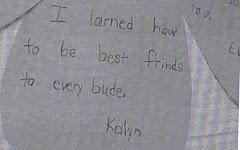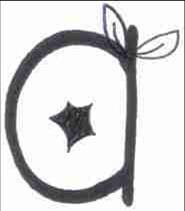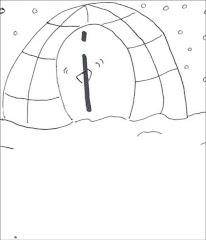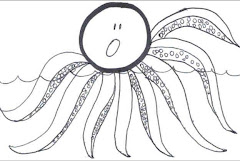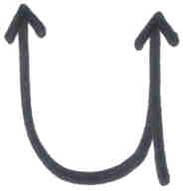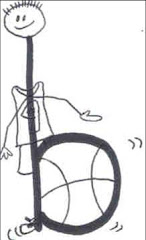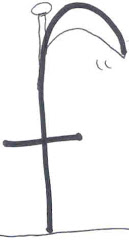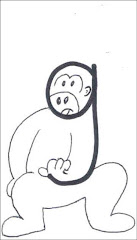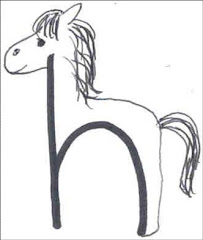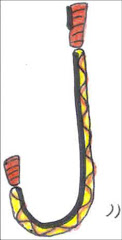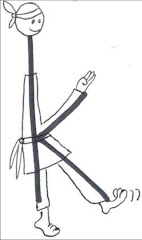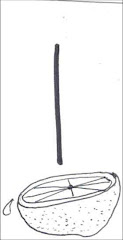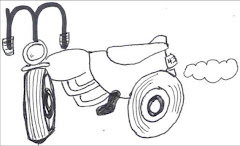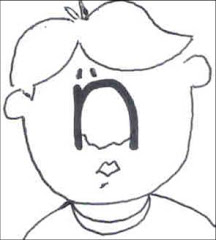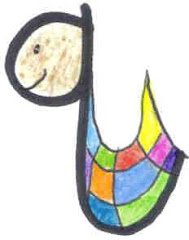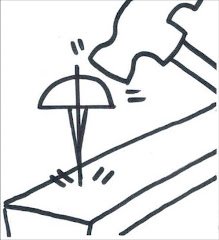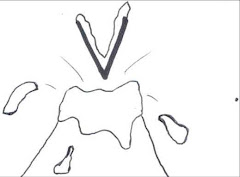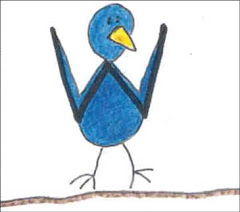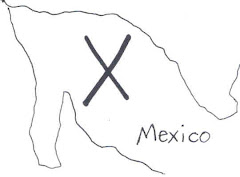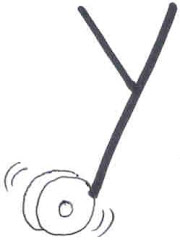
Mnephonics is an effective mnemonic intervention that helps students at risk acquire a logical connection to print!
Through the multiple modalities, students associate the sound and shape of letters in deep memory naturally and logically!


 Mnephonics Logic!
Mnephonics Logic! ...
...
Mnephonics encorporates similar mnemonic devices that were used by the Phoenicians, the inventors of the first alphabet...
Mnephonics encorporates auditory, visual and kinesthetic mnemonics that cue the brain to the shape and sound of the letter simultaneously...
The symbols look like an object whose name starts with the sound of the letter, but more importantly, look like an object that naturally makes the pure sound of the letter
Mnephonics incorporates mnemonic devices that cue the brain to the graphamotor skills required to "illustrate" or write the letters...

Most students are taught that the letter 'w' makes the /wuh/ sound---when in actuality, the symbol 'w' should trigger the brain to produce the pure sound /w/---dropping the added "uh". For example, when students blend the sounds /wuh/, /e/, /tuh/, the word produced is actually something like wuh-e-tuh---a nonsense word. When students blend /w/, /e/, /t/, the word produced is the actual word---wet! In the Mnephonics approach, the shape, name and "action" of the letter actually cue the pure sound!
For example, the letter 'w' is actually shaped like wings! When the students see the wings, they can actually hear the /w/ sound as they visualize the wings swooshing up and down. As the students make the action of 'w' ---flapping their arms up and down in the shape of a 'w'--- they make the /w/ sound. With this approach, the sound and shape of the letter 'w' are associated in deep memory---via visual, auditory and kinesthetic modalities!
Why Object Names Instead of Letter Names?
When reading and writing, it is the sounds of letters blended together that produce words. However, current literacy practices teach students the names of letters before their sounds are introduced or teach the names and sounds of letters simultaneously. As a result, at risk students often "mis-associate" the name or parts of the name with the symbol. For example, students who have acquired the name "double-u" for the letter 'w' will often "mis-associate" the sound /d/ with the symbol.
As an intervention for these students, Mnephonics uses actual object names instead of letter names. The object name cues the sound and the shape of the letter simultaneously, helping the at risk students acquire accurate sound-symbol knowledge that can immediately be applied to reading and writing.
For example, the letter 'w' is called 'wings'. The name 'wings' triggers the shape AND sound---/w/. As mentioned earlier, the name "double-u" actually confuses students who have not made connections to print, and most often triggers the /d/ sound. Using the object name is an intervention that helps at risk students immediately apply their knowledge of letter sounds and symbols to reading and writing---without interferences that delay the process.
Ironically, this is the same science used by the Phoenicians to create the world's first alphabet! The Greeks borrowed the letters and maybe a few names from the Phoenicians, but not the science! Mnephonics actually brings the logic of the Pheonician alphabet back to the English sound-system, making it possible for students at risk to make immediate connections to reading and writing. Here in lies the missing link!
Dr. Montessori's approach to teaching reading also focuses on sounds of letters first, leaving the letter names to be taught once the child has mastered the sound-symbol relationship. Check out more in the Background Information on this webpage : http://www.montessoriworld.org/Reading/spaprltr/sprintro.html
Why Through Real Words?
Mnephonics teaches the sounds of letters using an integrated approach. Letters sounds are taught through real words that are found in real texts. A word is "pulled" from a poem, song, story, or student's writing. The teacher teaches the sounds of the letters found within the target word. Once the individual sounds of the letters from the word are introduced, the students then blend the sounds together to read the original word!
word!
For example, let's say that the students are reading a poem that contains the word 'wet'. The teacher pulls the word 'wet' from the poem and writes it on the board. The teacher then discusses the student's knowledge of the individual letter sounds. If the students are unaware of the sounds, the teacher uses the Mnephonics strategies to help students acquire the sounds. Once the individual sounds of the letters are introduced, the teacher brings them back together and helps the students to blend the sounds and "read" the new word!
For more information on this phonics approach, email Alisha Das at mnephonics.das@gmail.com

